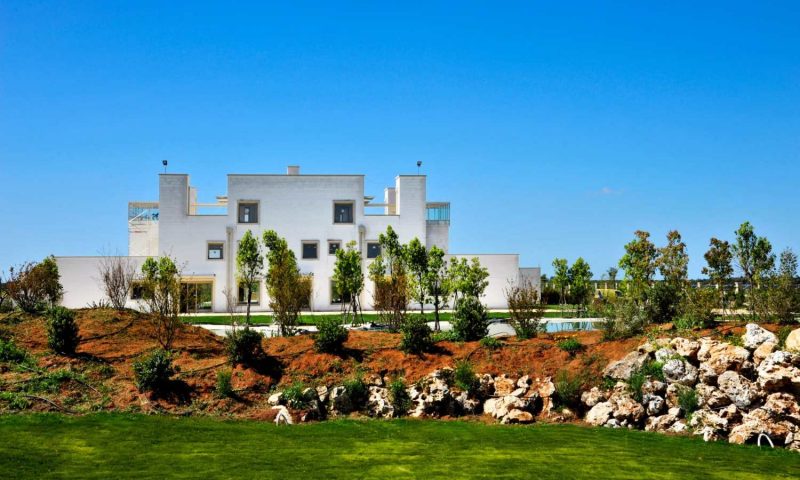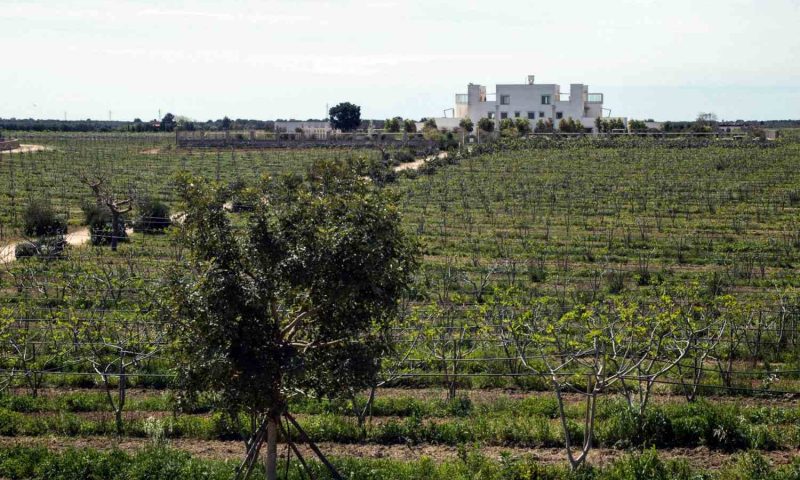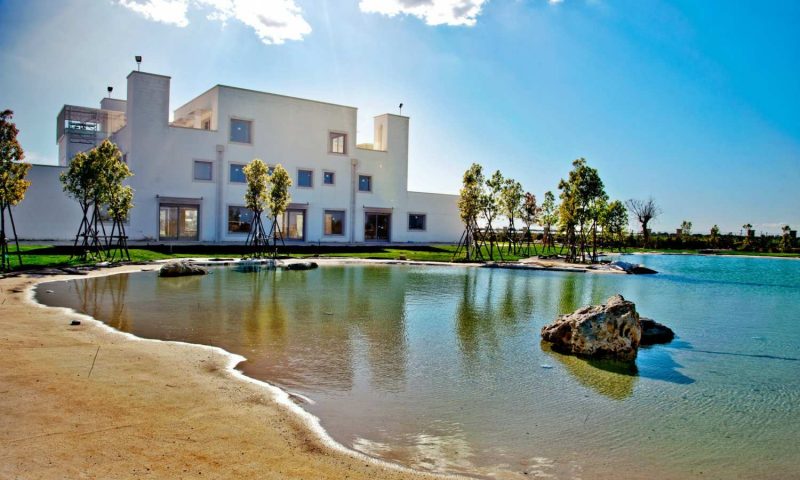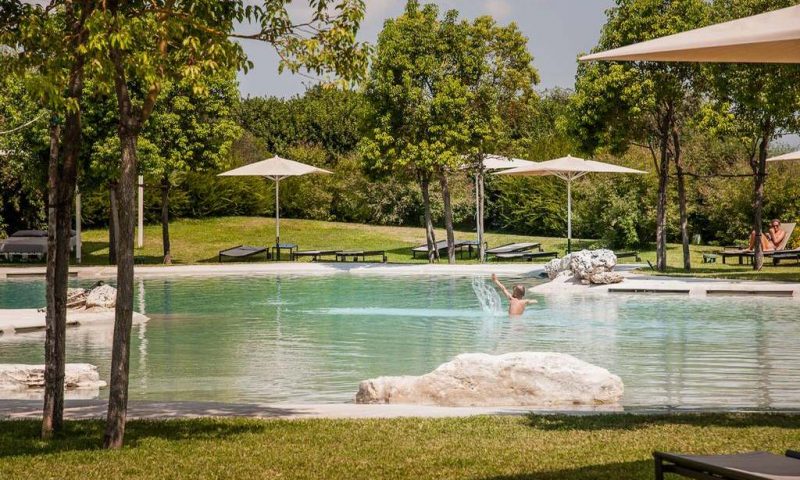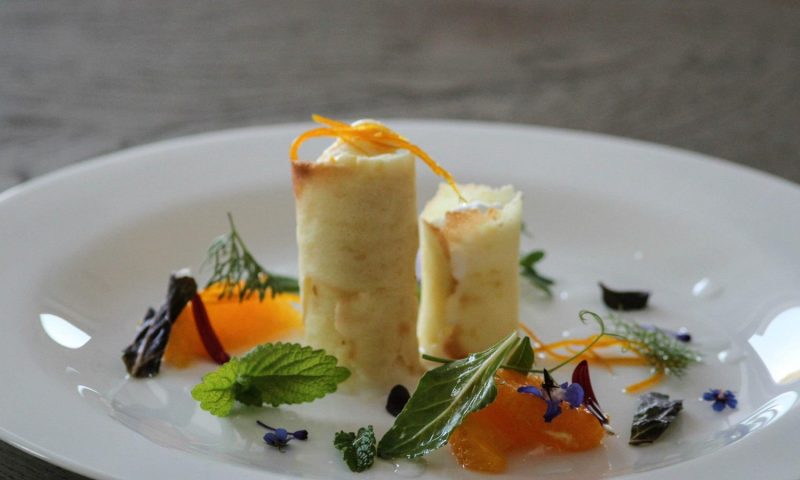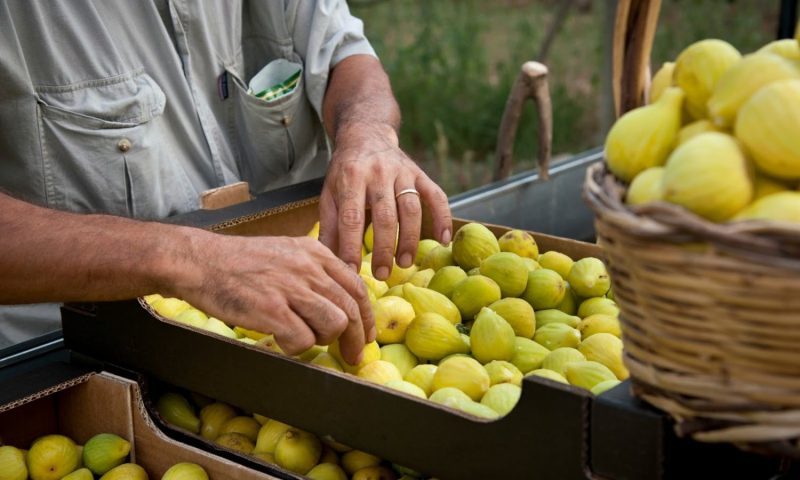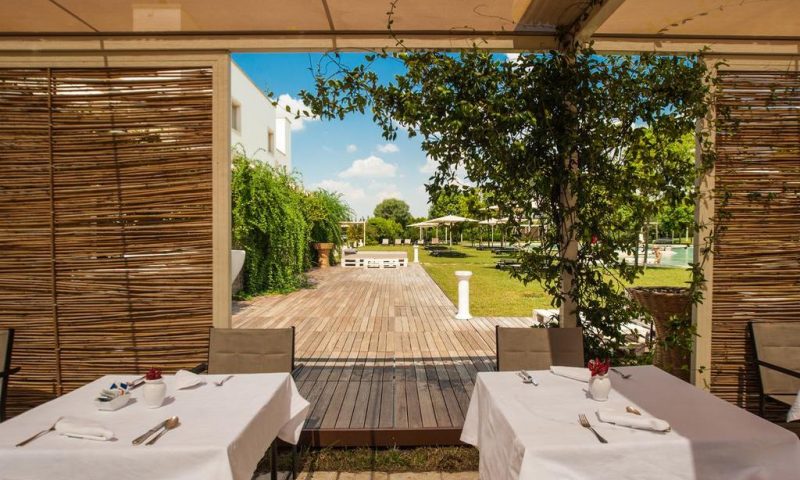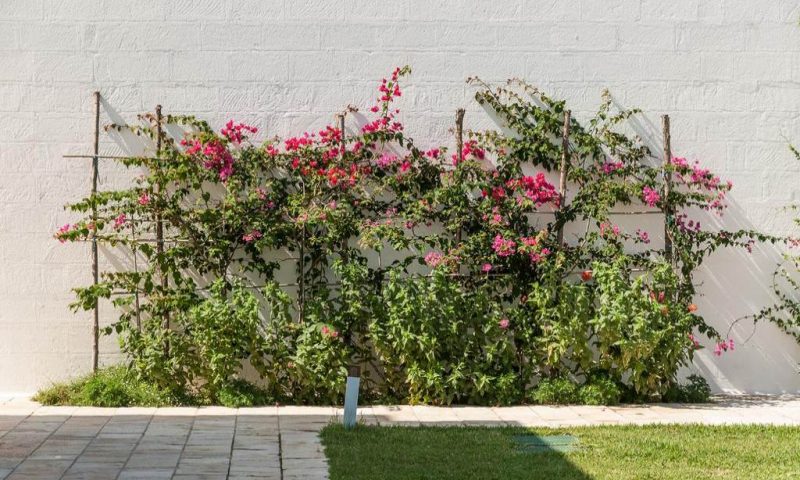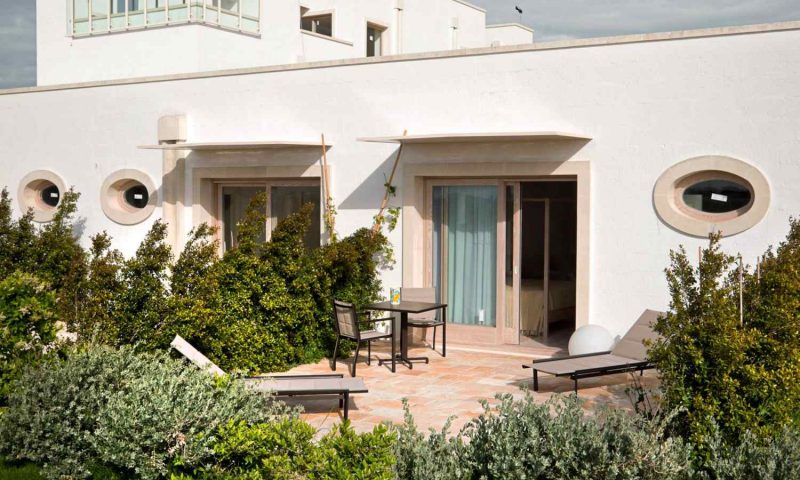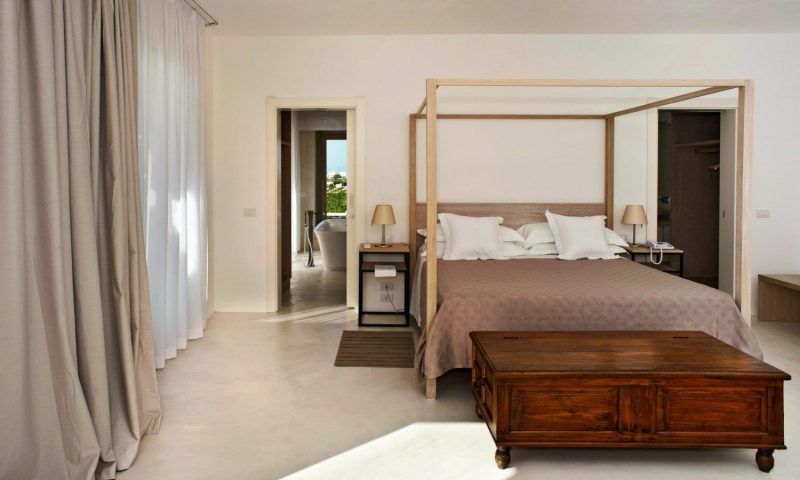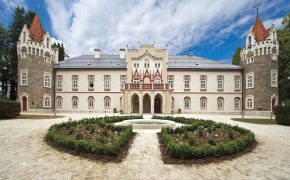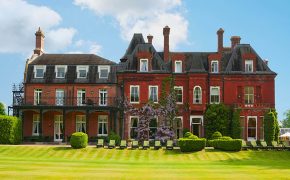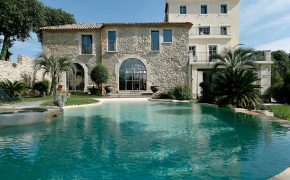Furnirussi Tenuta is located in Serrano, in the heart of the Grecìa Salentina, Puglia, surrounded by the biggest organic figs plantation in Europe: 4500 trees on 20 hectares. A 5-star resort in Puglia where scents and colors of the Mediterranean maquis contribute to creating a unique atmosphere, at only 12 km from Otranto.
Our resort Furnirussi Tenuta in Puglia has got 29 Suites equipped with all luxury comforts. The 26 Junior Suites on the ground floor are 43 sqm and offer a 36 sqm private garden-solarium, creating a delicious courtyard, embellished by rich Mediterranean vegetation.
The 2 Superior Suites are 65 sqm and have a 70 sqm panoramic terrace, large bathroom with panoramic tub and chromo-therapy shower. The Presidential Suite is 75 sqm and have a 120 sqm panoramic terrace, 2 bedrooms, 2 bathrooms (one of each with jacuzzi) living room area, walk-in closet and king-size bed
Furnirussi Tenuta, a 5-star resort in Puglia offers its guests high-quality, locally-produced farm products including seasonal fruits and vegetables from the Furni Russi farm located next to the estate. A well-equipped gym is offered for guests that like to keep fit: run, synchro, bike, recline and multiple cardio equipment included.
Furnirussi Tenuta, a 5-star resort in Puglia offers its guests high-quality, locally-produced farm products including seasonal fruits and vegetables from the Furni Russi farm located next to the estate. The 5-star hotel Furnirussi Tenuta offers a cozy and modern SPA with massage rooms, Kneipp, hydrotherapy trails, emotional shower, relaxation area, tea room and Hammam carved into the rock.
The biodesign pool which is in the form of a 1000 sqm natural lake is surrounded by a grove of camphor trees and abundant Mediterranean greenery to blend in perfectly with the surrounding environment, making the resort an ideal place to enjoy the warm Salento sun, where mind and body become totally regenerated.
PRESIDENTIAL SUITE
The Presidential Suite (75mq) is located on the first floor of the main building of the hotel. It is composed by two bedrooms and two bathrooms, one of which has got a jacuzzi, living room and panoramic terrace (120mq). Also, it is equipped with A/C, satelleite Tv, hair dryer, minibar, direct telephone line, Wifi and safebox.
SUITE EXECUTIVE
The bedroom is located on the second floor, in the precious part of the estate, equipped with a king size bed, sofa and coffee table, desk, table and chairs, antique chest, bathroom with panoramic tub, chromatherapy shower, elegantly furnished large terrace with panoramic view of the estate. It is equipped with air conditioning, satellite tv, hairdryer, minibar, direct telephone line, internet connection and safe. Moreover there is a lift to reach directly the Spa.
DINING
The Salento cuisine is characterized mainly by the use of simple and genuine ingredients that were the basis of eating habits of ancient rural populations.
IL FICHETO RESTAURANT
The resort offers an elegant dining experience that includes breakfast, lunch, snack and dinner in a picturesque environment to satisfy the needs of the most demanding customers, mainly using km0 and high quality ingredients. Il Ficheto Restaurant frequently updates menus to combine exquisite seasonally inspired offerings and tradition for an unparalleled dining experience.
THE POOL BAR
The gorgeous Pool Bar is a welcome addition to our pool area with an impressive 1,000sqm pool complex, where our guests can enjoy a lovely break, having a drink accompanied by delicious munchies and local delicacies.
WEDDINGS IN PUGLIA
Furnirussi Tenuta is a resort consisting of 29 comfortable suites, surrounded by the largest organic fig grove in Europe, immersed in the fascinating Salento countryside a few km from Otranto and Lecce.
Furnirussi Tenuta is the ideal location for an exclusive wedding, having spacious event areas available, from the large central patio where the famous 1000sqm bio design swimming pool is located, to the Mediterranean garden where you can enjoy all the essences and vegetation of the Salento Mediterranean countryside.
Furthermore, Furnirussi Tenuta has the possibility to organize your event even indoor, in the central hall, where up to 200 people can comfortably sit and in the event room on the first floor with a large panoramic terrace.
CONFERENCE ROOM
Our conference room, located on the first floor, consists of one-120mq main room, two 30mq meeting rooms and a panoramic terrace for outdoor events of 120mq. All spaces are equipped with Wifi, Audio and Video equipment, coffee break area.
SPA & WELLNESS
The resort has a large biodesign pool, furnished with sun beds and a gazebo and surrounded by a large grove of camphor trees. Our guests can take a cocktail at the pool bar or enjoy a short massage by the pool.
Moreover, for those wishing to make a more complete treatment, we offer a SPA with hammam carved into the rock, available every day by appointment. A gym with Technogym cardio equipment and a jogging path among the figs, complete our exclusive programme to achieve and maintain top psycho-physical form.
RELAX
Our Spa will make you live unforgettable emotions and sensations thanks to our Face and Body Rituals which guide our guest towards mental and physical well-being.
KISSED BY THE SUN
In a marvellous location immersed in a grove of camphor trees and surrounded by a large lawned garden, plants and Mediterranean essences, our 1,000sqm biodesign pool feautures two jacuzzi points and a natural solarium, giving you a total sense of well-being.
FITNESS ROOM
Our Fitness Room equipped with Technogym cardio equipment is entirely made of glass with doors that completely disappear when open, blending in perfectly with the ancient olive tree in the surroundings. For those who prefer the outdoors, the resort offers jogging and fitness trails among the largest figs plantation of Europe.
ACTIVITIES
Located in the heart of Salento, a few kilometres from Otranto, Furnirussi Tenuta is an ideal place where nature lovers can taste organic figs picked from the trees and outdoor sports enthusiasts can enjoy outdoor sports, such as biking, tennis or golf at the affiliated facilities.
Guests at the resort can also book a cooking class with our Chef or choose one of the exclusive activities organized by our reception staff. The resort is located a few kilometres from the sea. Our guests can spend their day at one of the affiliated Lido Beach Resorts.
FROM THE HILLS TO THE SEA
The province of Serrano dominates the Adriatic coast of Salento. It is a lovely rural town surrounded by olive groves, on top of a hill: the landscape is sweetened by a wavy motion to the valley of Salento that continues towards Otranto.
Tenuta Furnirussi five star Resort is just immersed in the Serrano countryside. The rural culture in this part of Italy is still rooted in the ancient traditions of this village, devoted to the figure of St. Giorgio Martyr, whom is dedicated the mother church, located at the highest point of Serrano.
THE LARGEST FIG PLANTATION
The Fig is one of the oldest and most important fruits in the agricultural tradition of Puglia and Salento. Furnirussi Farm Estate is surrounded by a plantation of fig trees on over 12 hectares of land.
The 4500 trees planted by Furnirussi Farm Estate in 2008 are the largest organic fig plantation in Europe. It is divided into 7 blocks of different varieties, all originating in Puglia and Southern Italy. The heterogeneity of fruits guarantees their maturation from June to late September, as well as all the benefits of an organic crop.
Besides, Furnirussi Farm, thanks to the support of the University of Salento’s botanical gardens and the invaluable collaboration with industry experts, has recovered and planted a collection of plants representative of almost all varieties of figs coming from Salento.
The commitment in the cultivation of native plant varieties, their organic certification and enhancement of local, human and material resources, constitute the Furnirussi Company’s strengths in the total respect of environment and high quality standards within a significant sector for the whole territory of Salento and Puglia.
CULTURE & MUSIC
The Taranta Night is a popular music festival which has become famous all over the world and it is aimed to promote the traditional music of Salento through its revival and the fusion with other musical languages.
An itinerant event that takes place in August and touches various provinces of Salento, starting from Corigliano d’Otranto, and culminating in Melpignano with a big final concert that sees the participation of national and international renowned musicians.
Every year, the festival records a participation of over one hundred thousand people. Each edition of the final concert is entrusted to a “Conductor Master” who has the honor of arranging traditional folk songs of Salento by blending the rhythms with other musical genres.
The first edition of the festival dates back to 1998. In August 2008, “La Notte della Taranta Foundation” was instituted with the objective to define strategic and operational decisions, promoting independent initiatives and coordinating the action of partners for the developing and preservation of Salento.
In particular, the foundation supports the study of our ethnographic heritage by sponsoring cultural, musical and social events, and development projects in support of research on the phenomenon of tarantism, of Salentine and Greek traditions, with specific reference to popular music.
Today, the Foundation, in addition to organizing and producing the “Taranta Night Festival“, is also involved in several projects in synergy with the main Italian and foreign universities and research centers on the territory of Salento, with the aim of studying and exploring traditions and the several local cultures linked to it.
SALENTO
Salento, the southern tip of Puglia region also known as the heel of Italy, is the land between two seas: the eastern coast is washed by the Adriatic and the west by the Ionian Sea. Historically called Terra d’Otranto, Salento is characterized by a strong cultural identity and includes 11 municipalities where inhabitants spoke an ancient language of Greek.
The architectonical landscape recalls the Greek cities for the absolute prevalence of the white houses “a calce”, without roof, especially in the countryside and on the coast, while the historical centers are characterized by the leccese baroque. The very fabric of this landscape is provided the famous local ivory-pink stone, called “pietra leccese”.
LECCE
Some archaeological finds, in this case low reliefs, suggest that the origins of the city of Lecce date back to the 5th century before Christ but a legend attributes its birth around 1200 B.C by Malennio, immediately after the destruction of Troy.
Then Malennio, according to legend, was the first to dominate Lecce, and to introduce the Greek culture in town. Sybar was the first name given to the city of Lecce, while the name Lupiae was given later, under the rule of the Japigi. During this period, the city was called in different ways, until we get to know it as Lecce, probably referring to the ilex tree.
During the Roman domination, Lecce experienced a strong economic and construction development and we find the traces of this ascendency in its coat of arms, which depicts a wolf at the foot of a holm oak tree.
With the fall of Marco Aurelio, however, the city began a slow decline, caused by the subsequent dominations by the Hungarians, Slavs and Longobards but with the arrival of the Normans around 1000, Lecce started to rise again. First it became a County thanks to Robert Guiscard and then the Capital of Salento.
During this period we witness to the rebuilt of very important monuments such as the Monastery of Saints Niccolò and Cataldo, the Monastery of St. Giovanni Evangelista and the Dome Cathedral. Thanks to Emperor Charles V, a new era begins for Lecce which turns into the largest Baroque city in Southern Italy, so part of the typical Renaissance of Salento.
Gabriele Riccardi and Gian Giacomo D’Acaia, two well-known architects of the time, left a significant contribution in the city’s makeover: all the transport routes were improved and a castle in honor of Charles V was built together with the Arch of Triumph known as Porta Napoli.
In the seventeenth century, with the bishops’ arrival, the most important churches of the city were rebuilt and a statue dedicated to Saint Oronzo, the Patron of Lecce, was placed on the Roman Column in the Market Square, which from that day on, became known as Santo Oronzo’s Square.
Today, these wonderful Baroque monuments admired all over the world, represent an art heritage of immense value and thousands of tourists, enraptured by such a beauty, come here to visit the streets of the old town.
OTRANTO
Otranto is an ancient Messapian town in Salento, mentioned by Latin writers with particular reference to its sea and its hinterland. The historical texts show that Otranto was a city of considerable importance in Ancient Times thanks to its strategic position for Greece and Eastern countries which used it as a bridge between East and West.
During the barbarian invasions, the inhabitants of Otranto had to defend the city from the Goths, by repelling them in 545 A.D. but later they had to surrender to the Longobards. At the end of the sixth century Otranto was under the Byzantines, becoming the administrative center of their southern provinces
It was during this period that the city was equipped with new and stronger fortifications erected to protect against the barbarian attacks. Under the Second Byzantine domination, Otranto reached its greatest heights together with the affirmation of the Greek rite. Demonstrating that, there is the small church dedicated to Saint Peter, built in the tenth century.
During the late eleventh century, the Abbey of San Nicola di Casole, located just a few kilometers from the town, quickly became the heart of the Italian-Greek monasticism in Puglia.
According to Mario Cazzato, it was considered as: – “one of the most important cultural reality of the Christian Middle Ages, becoming, between 1347 and 1438, the richest monastery in Southern Italy.” – The cloister was equipped with a rich library and its scribe monks were known throughout Europe.
Thanks to its port, already flourishing in Roman times, Otranto was one of the most important centers of the Byzantine dominion in Italy as well as the capital of the Salento Peninsula that since then was called “Terra d’Otranto.”
But things were about to change: in 1064 the city was forced to surrender to the new Norman rule.On 28 July 1480, 18,000 Ottomans, with a fleet of 150 ships, moved towards the city with the intention to plunder and conquer it.
However, the new “masters” did not destroy the pre-existing reality; on the contrary, they tried to make some positive changes, redefining the defense structures, such as the castle and the walls.
In 1088, after long years of work, the cathedral was finally built, in which square was the town’s life. In those years, the port of Otranto, hosted oftentimes the Christian knights who were fighting in the Crusades.
The Anjou and the Aragonese domination followed afterwards. Otranto also witnessed the bloody invasion of the Turks which has become well known in history for the sacrifice of 800 brave people who did not want to surrender to the battle until the end.
After refusing to convert to Islam, they were beheaded on the Minerva hill, and still today they are remembered as the Martyrs of Otranto. The Saracens remained in the city for a year, until the Aragonese entered the town and freed it but Otranto now retained little of its old charm, in fact, the Abbey of Casole was destroyed, as well as trade and the Cathedral.
GALLIPOLI
Gallipoli is a magnificent seaside town rich in history and tradition. It was previously called Anxa by Messapi but it owes its present name to the Greeks; in fact “Kalli Polis” from the ancient Greek language means “Beautiful City.”
Ever since Roman times, its harbor was one of the most important sea ports of the Salento peninsula, along with that of Taranto on the Ionian Sea; here, in fact it was the great emporium for the selling of purple, largely produced in the region.
For centuries, the city remained faithful to the Greek culture and civilization, still in the dialect and the religious rites. Only in the sixteenth century, the Latin rite, already stated in Salento since the late Middle Ages, was also accepted here to replace the Greek one.
Gallipoli previously belonged to the Romans, following the fate of the rest of Italy until the empire collapse. The barbarians came here too – the Vandals and the Goths – finally rejected by the Byzantines.
Occupied by the Normans in the late eleventh century, Gallipoli went under the Swabians, then to the Anjou, following the peninsular affairs. The Anjou built a fortress on the ruins of an old Byzantine castle.
The castle of Gallipoli was restored at the time of the Spaniards in the early decades of the sixteenth century. (Note that the south-east tower is all that remains of the structure dating from the Byzantine’s time).
The coast of Gallipoli is a long stretch of fine sand. Its beautiful bay gets to the South with Punta Pizzo, which is also sandy and characterized by crystal clear sea and the typical Mediterranean flora.
From the artistic point of view, Gallipoli boasts a large number of particularly fascinating monuments: The Cathedral of Saint Agata has a facade in typical seventeenth-century style and inside there’s a rich art gallery which includes works by Giovanni Andrea Coppola, Nicola Malinconico and Antonio Catalano Senior.
The prestigious Hellenic Fountain has three bas-reliefs depicting the metamorphosis of Circe, Salamace and Biblide. In “The Beautiful City” we also find the majestic Angevin Castle. The famous seventeenth-century bridge, finally, connects the old city to the new one.
SOUTHERN SALENTO
Maglie, a major referral center for the low Salento, is set in a valley composed of small hills on which human settlements were found, dating back to prehistoric times, as evidenced by the archeological remains from Paleolithic era in the districts of Cattiè and San Sidero (80-45 thousand years) and from the Bronze Age in Cavallare’s District and Adigrat Road (XI-XVI sec. B.C).
Moreover, the many megaliths (dolmens and menhirs) scattered in the countryside around Maglie are also attributed to the Bronze Age. The oldest documented settlement dates between the ninth and eleventh century, during the so-called second Byzantine colonization.
Later, the city of Maglie met a long era of barony by the Lubello Family, the Maresgallo, the Carreras Y Eril, the Filomarino della Torre and finally the Capece Castriota. Until the eighteenth century, Maglie is not so dissimilar from the other villages of Terra d’Otranto.
The structure of its first urban center has remained almost intact in time and is characterized by two main agglomerations called “Isles”: St. Nicholas Isle and Middle Road Isle which branch in winding streets (strittule) and dead ends (curti).
The Isle of St. Nicholas included an oval shaped area on which stood a parish church, the baronial palace at south-east (today domicile of Capece High School), Piazza delle Botteghe Square, (called Largo delle Ferraie during the nineteenth century and today corresponding to the North area of Moro Square).
This precious architectural jewel is a shining example of the finest Renaissance art: Saint Nicolas Isle (now the Dome Square) in turn, was divided in two routes: one to the north called Congregation Road (the town’s ring road) and the other called Foggiari Road or Gravediggers Road.
Middle Road Isle was the main urban link of the town which overlooked the Sumai courtyard (today Droso Palace), the long and winding road of Santa Maria (now Hospital’s Road) and did cut across Pozzo’s Square (the current Moro Square), called like this for the presence of some artesian wells.
Where today stands the monument to Francesca Capece, the last Lady of Maglie, was the “Segiu”, the ancient Town Hall which got its peak in the first three years of 1840’s decade.
From the square, two other roads begun: The Lama Road at south east and San Giovanni Road at south (now Trento and Trieste roads) which ended to a small Greek church where later was erected the church of Saint Addolorata.
In the early decades of the nineteenth century, the urban aspect of Maglie started to change: some renowned palaces in Lecce stone were built, on which a warm ocher veil laid down upon the years, giving the city an air of refined and striking beauty.
The construction in 1832 of the Lecce – Leuca provincial road that, through Middle Road, met The Salentine Ferdinand one in 1855 (Gallipoli – Otranto) put the city of Maglie at the center of a dense road network which radially connected it with neighboring communities.
